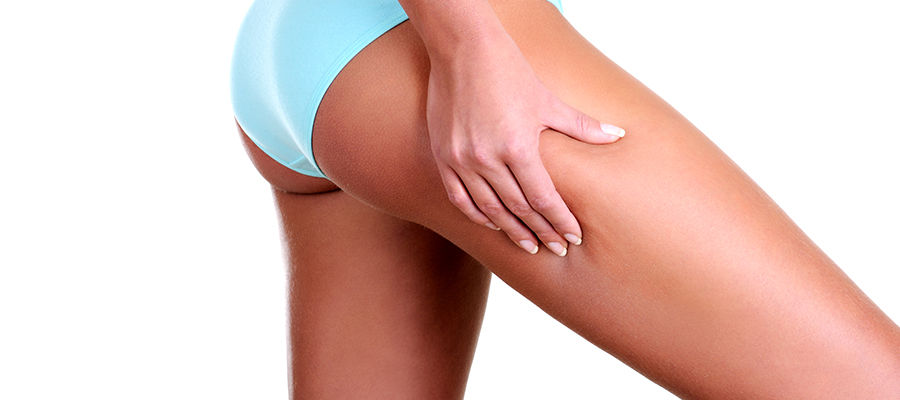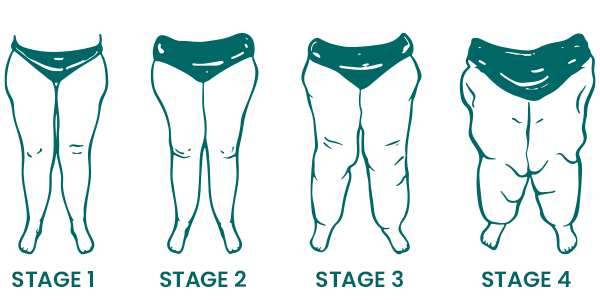Lipedema

LIPEDEMA
Lipedema is a condition that affects most women and is caused by the irregular distribution of fat under the skin, usually on the hips and legs. Women living with this disease cannot lose weight even with an ideal diet and regular exercise. This chronic condition particularly affects the legs and the arms, causing an abnormal accumulation of fat cells and producing a visibly disproportionate appearance. While this condition is initially perceived as a cosmetic issue, it not only causes emotional distress but is also very painful and potentially slimming. It can eventually cause pain and many other physical and psychological problems. Lipedema is often misdiagnosed as weight gain or lymphedema. The diagnosis of lipedema should be made clinically.
Causes of Lipedema
Although the exact cause is not known, it is suspected that female hormones play a role. This is because the disease mostly affects women. It usually begins or worsens during puberty, during pregnancy, following gynecological surgery, and during menopause.
Scientists also believe that genes are involved, as many women with the disease have family members with the same disease.
Phases of Lipedema:
Phase 1
Smooth thickening with an increase in enlarged subcutaneous fat tissue.
Phase 2
Uneven skin with indentations in fat tissue, and larger fat tissue (lipomas) that can be seen and felt.
Phase 3
The formation of large layers of fat tissue that causes deformations, especially around the thigh and knee.
Phase 4
Development of lipolymphedema, a condition in which both lipedema and lymphedema are present with accumulation of fluid in the body; and an increase in large protuberances of tissue in the legs and/or arms.

Symptoms of Lipedema:
This disorder gives the individual a "tree-like" leg disproportion, in which the fat completely covers the thighs, knees, calves and ankles. Usually there is a clamp around the ankles that does not affect the feet.
Softness and cellulite in the legs are common features that may occur. When the disorder reaches an advanced stage, it is a definite possibility that the arms will also be affected. Pain, tenderness, decreased mobility, numbness, dullness, and easy bruising are signs or symptoms experienced by many patients. Early diagnosis and treatment are important as it affects long-term prognosis.
Lipedema affects both thin and obese individuals in the same way, and usually, no diet or exercise can stop or prevent it. This disorder typically appears during the teenage years and then gets progressively worse.
Typical symptoms are legs that are often tender, painful, fatter than normal body proportions, and prone to bruising easily. For instance, the upper half of your body may be a size 36, while the lower half may be a size 46.
Where can lipedema occur?
Swelling and deposits occur mostly on the legs. The disease mostly affects the thighs from the buttocks. If it is more advanced, the lower legs up to the ankles are also affected. Arms may also be affected.
Unlike obesity, it targets the legs, thighs and sometimes arms. Unlike lymphedema, lipedema begins in the upper legs, not the lower legs (feet and ankles), and usually affects both legs.
Over time, fat cells clog the vessels of your lymphatic system, which normally helps balance body fluid levels and protect against infection. This blockage prevents the proper drainage of lymph fluid, causing the accumulation of fluid called lymphedema.
If lymphedema is not treated, it can lead to problems such as infections, delayed wound healing, the development of scar-like tissue called fibrosis, and hardened skin on the legs.
Lipedema Treatment
Surgery with liposuction to remove diseased fat storage tissue is the only known treatment that can truly alter the course of lipedema.
Liposuction is the only and major surgical intervention for lipedema. Common techniques used for liposuction are tumescent anesthesia (TA) liposuction and water-assisted liposuction (WAL).
When should surgery be performed for lipedema?
This painful condition has three stages. Especially in the 2nd and 3rd stages, the pain felt by the women increases. Since lipoedema cannot be cured, only surgery can provide permanent relief.
Does the fat removed after liposuction come back?
In principle, removal of fat cells by liposuction is permanent. In most cases, however, all of the fat tissue can not be removed, and this causes the number of diseased fat cells to increase further. However, due to the significantly less amount of fat tissue, the increase in diseased fat cells is much slower compared to the period before liposuction.